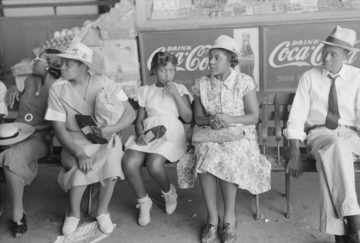Jessica Parr in Black Perspectives:
 In 1852, the Third Avenue Railroad Company was founded. It ran between City Hall and 62nd Street in Manhattan. Its horse-drawn streetcars quickly became the primary mode of transportation in the city. A small number of the cars carried placards indicating that they accepted African American passengers. Additional cars occasionally allowed Black passengers at the discretion of the operator, and with the approval of the white passengers.
In 1852, the Third Avenue Railroad Company was founded. It ran between City Hall and 62nd Street in Manhattan. Its horse-drawn streetcars quickly became the primary mode of transportation in the city. A small number of the cars carried placards indicating that they accepted African American passengers. Additional cars occasionally allowed Black passengers at the discretion of the operator, and with the approval of the white passengers.
As historian Elizabeth Stordeur Pryor’s work emphasizes, freedom of movement was something that white Americans could take for granted. Mobility, which included equal access to transportation, was therefore a major area of focus for early Black activists. Some of the activism in nineteenth-century Black organizations revolved around the creation of networks to guard against the kidnapping of free African Americans into slavery. Black kidnapping victims’ lack of legal rights made it very difficult for them to prove their right to freedom. For example, it took Solomon Northup’s supporters twelve years to locate him and free him following his kidnapping and subsequent enslavement. This legitimate fear was one source of limitation on mobility. Another involved access to transportation or legal documentation that proved African Americans’ right to move around the country—or even across the globe—without restriction. As a result, Black civil rights organizations often initiated legal challenges to segregationist laws and company policies on street cars, trains, and ships. Successful legal challenges were then used as models in other cases throughout the country.
More here. (Note: Throughout February, at least one post will be dedicated to Black History Month. The theme for 2023 is Black Resistance. Please send us anything you think is relevant for inclusion)
